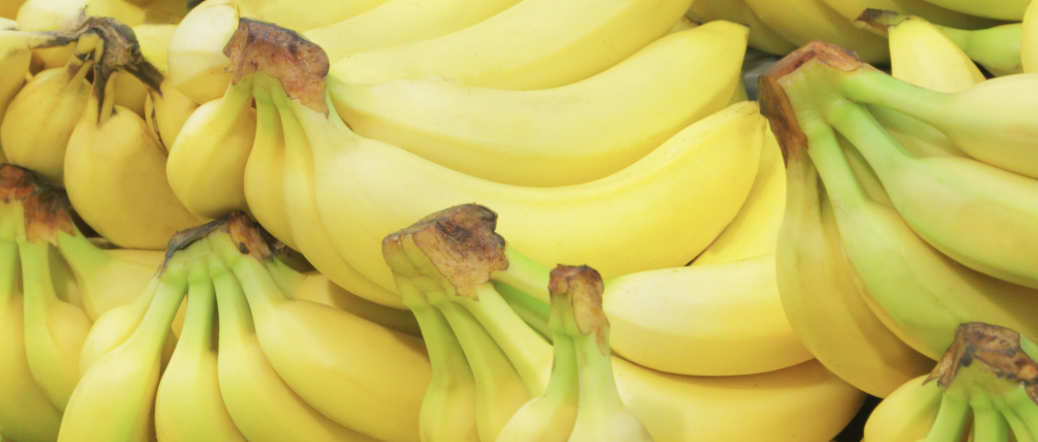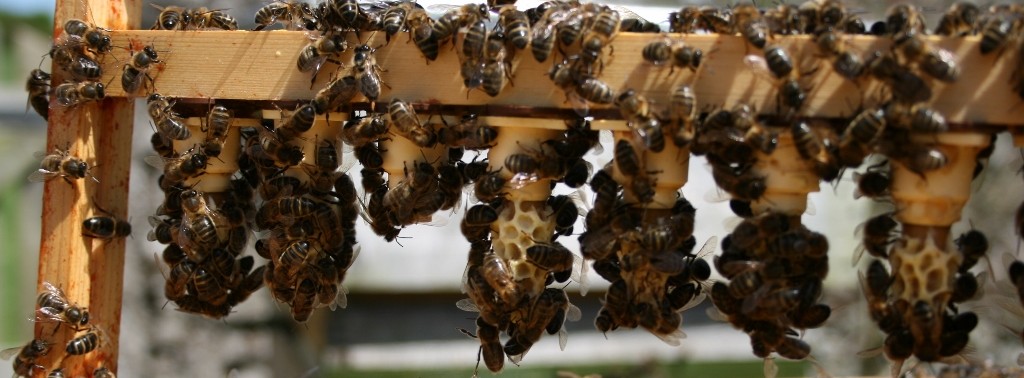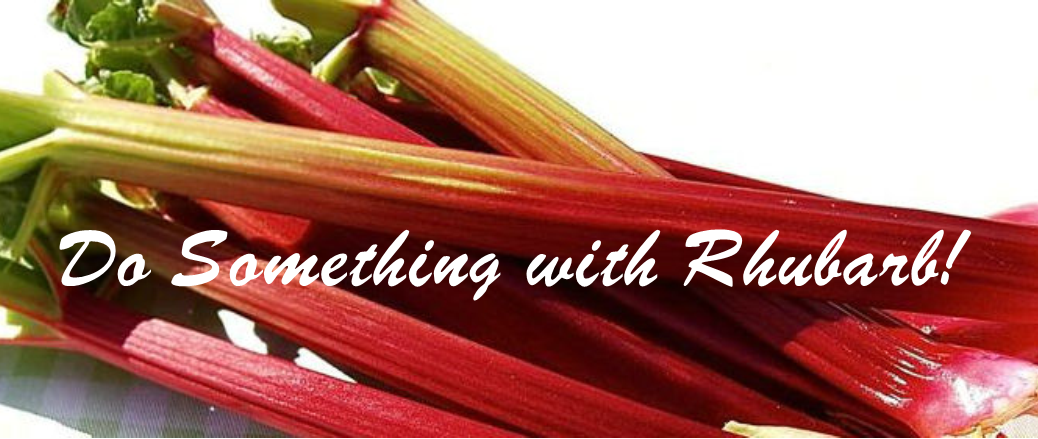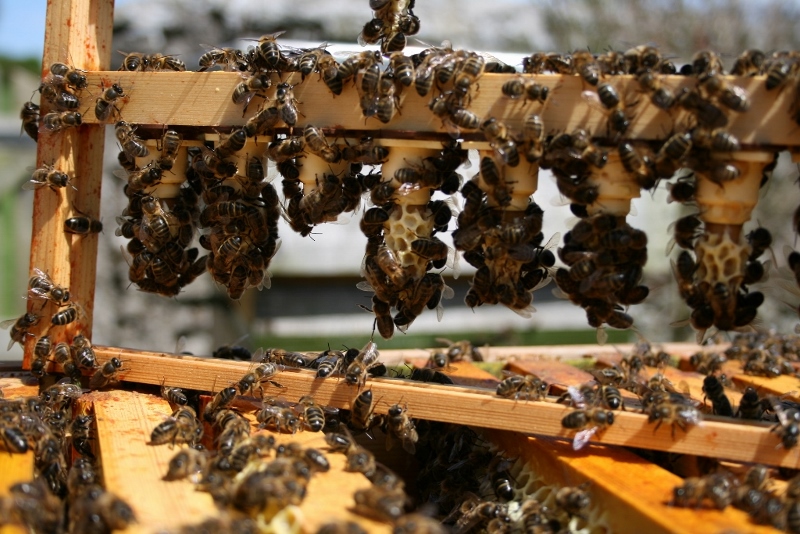So – the banana thing. Here’s what was left after a month, a black and shrivelled thing with a strong smell of propolis. But what are the conclusions if any? Continue reading Chalkbrood Banana Results
Category Archives: Things to do in June
Chalkbrood and the Banana Thing
Have you heard the Banana Thing – the one about the banana in the beehive?
While there is ‘anecdotal evidence’ for bananas as a cure for chalkbrood – it is not scientifically proven.
However, it isn’t scientifically disproven either and there’s no smoke without fire. Read on… Continue reading Chalkbrood and the Banana Thing
Hooper’s Five Questions
Ted Hooper’s five questions – as described in his book ‘Guide to Bees and Honey’ were devised to walk the beekeeper through his or her weekly inspections. The first 5 columns in the Colony Assessment Sheet are there for you record the answers.
Take a look at this frame of bees above – yes there are several things there that should put you on alert!
What you do, or don’t do, in response is the essence of beekeeping. Continue reading Hooper’s Five Questions
How to improve your bees
There are all sorts of bees for sale out there – Buckfast, Carniolan, Italian, Russian, Greek – you name it but how can they possibly be better than the locals on their home turf? Think about it, think about the risks in importing diseases and god knows what-all else. Don’t import bees – improve your own.
Click here for more information on the Native Irish Bee.
Here’s how and it isn’t difficult. In fact it’s fun and very rewarding – you will see real results year on year. We used to have some really horrible bees here and only a few hives of them but each year they would chase us round the garden. Now, in the middle of summer I have around 25 hives of bees here and stings are rare.
So make a start this year. Continue reading How to improve your bees
Honey Bee Colony Assessment
Bee improvement is not difficult – anybody can do it and in fact every beekeeper should do it. The first step is to assess your colonies for a full season and record the data in a Colony Assessment Sheet. It will take a full season because the bees often do not show their true colours till they are big and strong and start to throw their weight about. Once you have the data you can compare colonies systematically and objectively then select stocks for breeding and stocks for culling.
The sheet below has been designed to record both Colony Assessment Data and routine beekeeping information from each visit. Click it for a better view. Scroll down and I’ll walk you through it…
How to unite bees – the Third Box Principle
Rationale
Once upon a time I used to keep mice. They don’t swarm but they are territorial and they do fight. If you try to introduce two mice, of any or either sex, by simply dropping one into the cage of the other they will fight. However, if you put the two of them together in a third cage they will get along like a house on fire. This is what I call ‘the third box principle’ and the same thing applies with bees.
Before we go any further I should state that the Third Box Principle is not an explanation of bee behaviour but it is a mental model which helps the beekeeper to ‘put a handle’ on what is observed. It is also a particularly helpful thing to know when you are in the thick of the latest bee conundrum and wondering what the hell to do next – it can give you extra options.
Here are some useful things to do with it:
Continue reading How to unite bees – the Third Box Principle
Summer Oxalic Acid Varroa Treatment
Oxalic Acid
Oxalic acid is a very effective treatment for Varroa but only during broodless periods when the kill rate can be above 90%. When brood is present the kill rate is closer to 30% as most of the Varroa are in the brood where this acid cannot reach them. Click here for more on oxalic acid.
For this reason oxalic acid tends to be used during the mid-winter broodless period – if there is one!
However, winter is not the only time bees are broodless and oxalic acid can also be used during summer broodless periods when the Varroa are phoretic (out and about on the bees).
Summer Treatment
Imagine a swarm…
Quick queen-bee introduction – Matchbox Method
There are many reasons during the course of the season why you might need to replace a queen bee. She could have become a drone layer, you may have killed her by accident or it could be that the bees need to be improved by the addition of a new queen with better genes. Whatever the reason, you can’t just put her in because they will almost certainly kill her – although I have known cases where clipped queens have fallen to the ground in failed swarming attempts and have then made their way back up the stand legs and into the front door of a queenless neighbour! Continue reading Quick queen-bee introduction – Matchbox Method
Queen Rearing Timeline
It always seems to take an eternity for these new queens to get laying and the spectre of queenlessness and laying workers rears its ugly head. But when you sit down and actually work it out it, it’s often your expectations that are out of whack.
Remember she matures for 4 days after she emerges then even if she goes straight out and mates she won’t start to lay for another 4 or more days after that. So don’t waste your time looking for eggs till she’s 2-3 weeks old because if she’s not laying before then there’s nothing you can do about it anyway except gnash your teeth.
Have a look at this diagram instead – it’ll help keep your expectations on track.
Click it for a bigger version.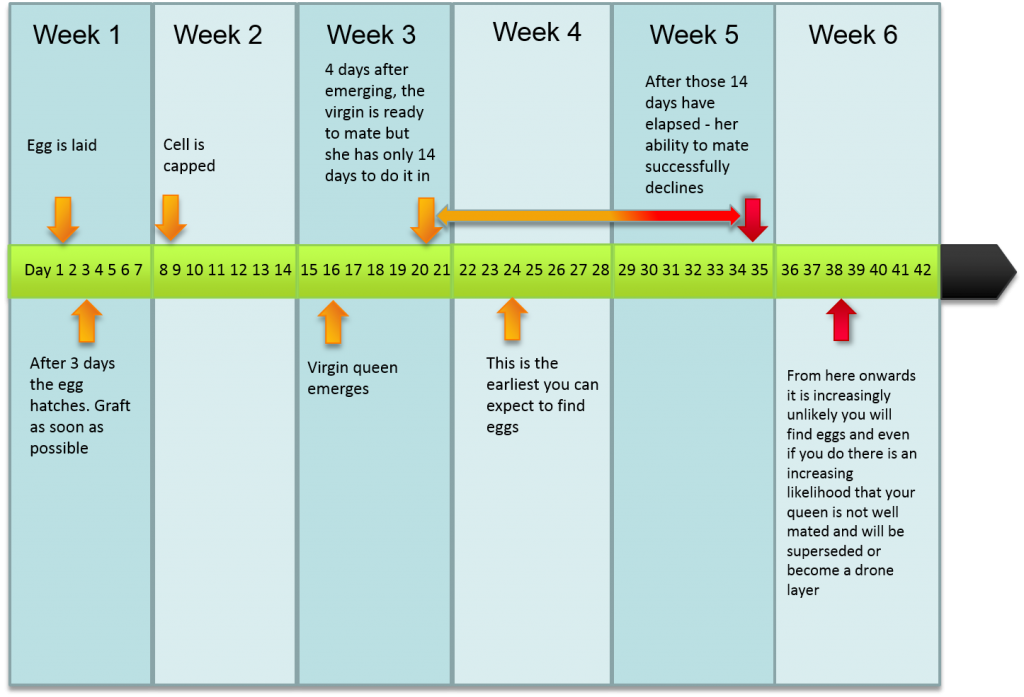
Or click the thumbnail below for a queenrearing timeline for Jenter kit with a Cloake board system
Click here for How to set up your Apidea
Click here for a Queen Rearing Timetable for Jenter kit or grafting with Cloake board cell raiser.
Copyright © Beespoke.info, 2014. All Rights Reserved.
Piping Queen Bees
If you have a few queen cells in Apideas lined up in a dark shed awaiting release, you will know when the little virgin queens hatch because they will announce their presence by piping a challenge to any others who might be out there. Often quite a chorus can start up!
Here is a recording of a piping queen bee:
And here’s another:
Click here for photos of fighting queen bees.
Copyright © Beespoke.info, 2014. All Rights Reserved.
